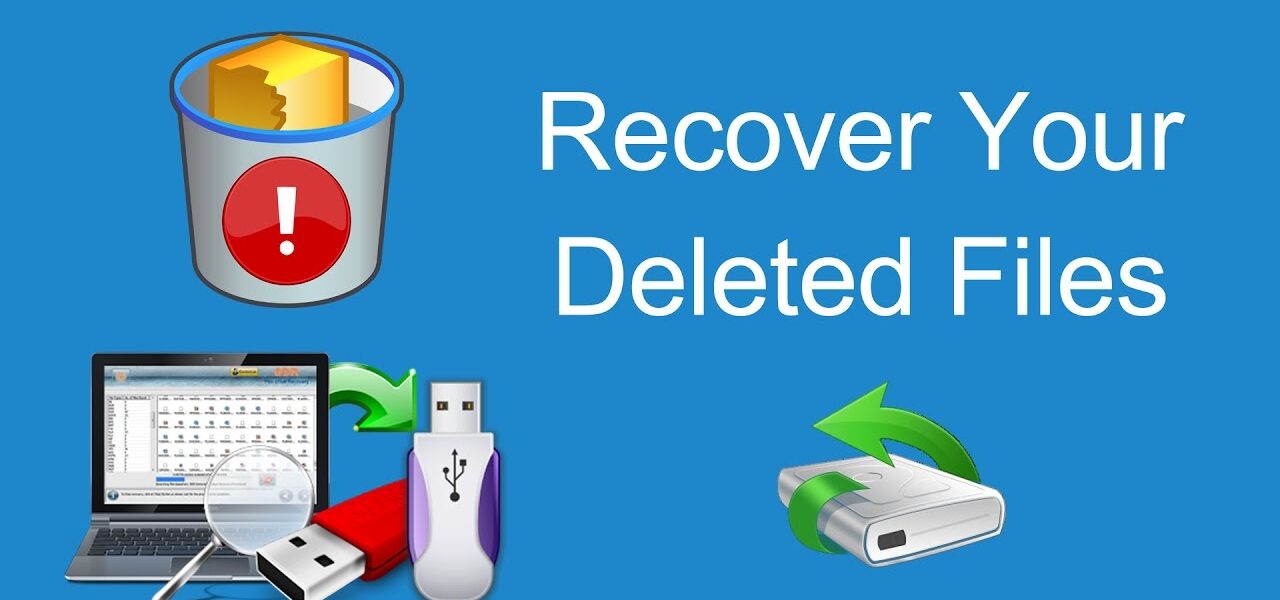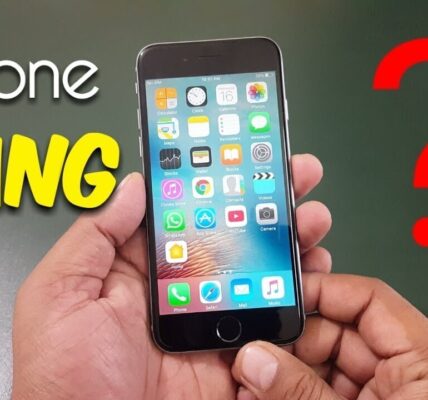Ever accidentally deleted an important file and felt your heart skip a beat? You’re not alone. If you’ve ever muttered, “How do I recover deleted files from my computer?”, rest assured you’re in the right place.
Whether you’re a tech-savvy pro in Canada or a college student in Nigeria, data loss can be a frustrating ordeal. But here’s the good news, deleted doesn’t always mean gone forever. With the right tools and steps, there’s often a good chance you can recover your lost files.
Understanding File Deletion: What Really Happens
When you “delete” a file, especially on modern operating systems, it usually isn’t erased immediately. Instead, your OS marks the space it occupied as “available,” which means until that space is overwritten, your file is technically still there.
Think of it like erasing a name from a name tag but not shredding it. If no one writes over it, it’s recoverable.
Why Files May Still Be Recoverable After Deletion
So, how is recovery even possible?
Here’s why:
-
The file data remains on your disk until overwritten
-
Recovery tools can scan and reconstruct this “lost” data
-
System backups might retain old versions of files
If you act fast and avoid writing new data to your drive, your chances of success increase significantly.
The data still exists physically on the disk, specialized recovery tools can scan sectors of your hard drive, SSD, or external device to look for remnants of these “deleted” files. They essentially hunt down this invisible data and piece it back together like a jigsaw puzzle. If the puzzle pieces haven’t been scrambled (overwritten), chances are good the file can be recovered.
Let’s break it down further:
-
Hard drives (HDDs): Great for data recovery because deleted sectors can remain untouched for a long time.
-
Solid-state drives (SSDs): Trickier, especially with TRIM enabled. TRIM actively wipes clean deleted data, which reduces recoverability.
-
Flash drives/SD cards: Recovery is possible unless heavily used or reformatted.
The Role of Backup Systems
Another reason files may be recoverable is because of automatic backups. Whether you realize it or not, many systems (Windows File History, Time Machine on Mac, OneDrive, Google Drive, etc.) keep versions or temporary copies of your files. These may not be the latest version, but it’s often enough to save you from total loss.
In business settings, especially in places like Canada or the U.S., companies often use network-attached storage (NAS) with snapshot-based backups, meaning deleted or overwritten files are still available in previous versions for days or weeks.
Timing is Critical
The biggest factor in successful file recovery? Speed.
Every second you use your computer after deletion increases the risk of overwriting that deleted file’s space. Activities like:
-
Installing programs
-
Streaming videos
-
Browsing the internet
-
Downloading email attachments
…all generate new data that can accidentally take up the space your file once occupied. Once that happens, your file becomes much harder, if not impossible to restore.
Check the Recycle Bin First (Windows/Mac)
Restoring Files from Recycle Bin (Windows)
This is the first place you should check.
-
Double-click the Recycle Bin on your desktop.
-
Browse or search for your file.
-
Right-click it and select Restore.
That’s it! Your file should return to its original location.
Restoring Files from Trash (macOS)
-
Click the Trash icon on your dock.
-
Find your file.
-
Right-click (or Control-click) and choose Put Back.
Easy, right?
Using Built-in OS Tools for Recovery
File History on Windows 10/11
If you had File History enabled:
-
Open the folder where the file was.
-
Click History on the ribbon.
-
Browse and Restore the desired version.
macOS Time Machine
-
Connect your Time Machine drive.
-
Launch Time Machine from Spotlight or Applications.
-
Navigate through the timeline to locate your file.
-
Click Restore.
It’s like rewinding time—but for your files!
Free File Recovery Software Options
Sometimes, native tools just won’t cut it. In such cases, free software can be a lifesaver.
Recuva (Windows)
Recuva by CCleaner is lightweight and effective.
-
Recover files from hard drives, USBs, and SD cards
-
Supports deep scan
-
Free version works fine for most needs
PhotoRec (Windows, Mac, Linux)
This open-source option supports many file types.
-
Works even on damaged drives
-
Ideal for tech-savvy users
Download: PhotoRec
Disk Drill (Windows/macOS)
A powerful tool with a slick UI.
-
Free up to 500MB on Windows
-
Recovery Vault protects files proactively
Try: Disk Drill
Professional Data Recovery Tools
Need more firepower?
EaseUS Data Recovery Wizard
-
Recovers from formatted, lost, or RAW partitions
-
Supports Windows and macOS
-
Free version recovers up to 2GB
Link: EaseUS
Stellar Data Recovery
-
Trusted by businesses
-
Supports photos, videos, docs, and more
-
Bootable recovery for crashed systems
Explore: Stellar Info
How to Recover Deleted Files from USB/External Drives
USB drives and SD cards are notorious for sudden deletions.
Steps for Recovery on Windows
-
Plug in the device.
-
Use Recuva or EaseUS to scan it.
-
Select and restore desired files.
Steps for Recovery on Mac
-
Mount the device.
-
Use Disk Drill or PhotoRec.
-
Choose a different drive to restore the files to.
Recovering Files After Formatting Your Drive
Accidentally formatted a drive? Don’t panic.
-
Tools like Stellar and EaseUS can recover data even after a quick format.
-
Just avoid using the drive before running recovery.
Formatted isn’t final, it’s just a clean slate that still holds the previous contents underneath.
Recovering Files from a Corrupted Hard Drive
A failing or corrupted hard drive poses serious risks.
-
First, clone the drive using tools like Clonezilla.
-
Then, scan the cloned drive using Stellar or R-Studio.
-
Never install recovery tools on the corrupted disk itself.
If this sounds too risky, get help from a professional recovery service.
Cloud Backups and Sync Services: A Lifesaver
Most users overlook their cloud history.
Google Drive, Dropbox, OneDrive
-
Log into the platform
-
Go to Trash or Deleted Files
-
Restore in one click
These platforms usually keep deleted files for 30 days.
Prevention Tips: Never Lose Files Again
Use Versioning Tools and Backups
-
Enable File History (Windows) or Time Machine (Mac)
-
Set up automated cloud backups with Backblaze or iDrive
Install Data Protection Software
-
Ransomware protection
-
Disk health monitors
-
Automated backups
These tools are your digital insurance.
When to Call a Professional
If:
-
The drive makes clicking noises
-
Files are too valuable
-
Recovery attempts failed
Then stop what you’re doing and consult a professional recovery lab like DriveSavers.
Conclusion: Peace of Mind is a Backup Away
Losing files might feel like a tech tragedy but the reality is far less grim. Whether you’re working from home in Ghana, running a startup in Malaysia, or freelancing in the U.S., tools and tactics exist to help you bounce back.
From the humble Recycle Bin to full-scale data recovery suites, knowing your options can save your sanity and your data. So next time you wonder, “How do I recover deleted files from my computer?”, remember this guide. Better yet, set up some backups and avoid the mess altogether.
Read Also 5 Simple Ways to Screenshot on Your Laptop
FAQs
Can I recover permanently deleted files without software?
Yes, if you use system tools like Windows File History or macOS Time Machine and had them enabled beforehand.
Is it safe to use free recovery tools?
Yes, reputable tools like Recuva and PhotoRec are safe—but always download from the official site.
How do I recover files from a formatted hard drive?
Use recovery software that supports deep scanning of formatted partitions, like Stellar or EaseUS.
Can deleted files be recovered after 30 days?
It depends. Some cloud services and OS tools retain files that long, but recovery after that usually requires specialized software.
Why can’t I find my deleted files even with recovery tools?
They may have been overwritten or your storage device could be physically damaged.




